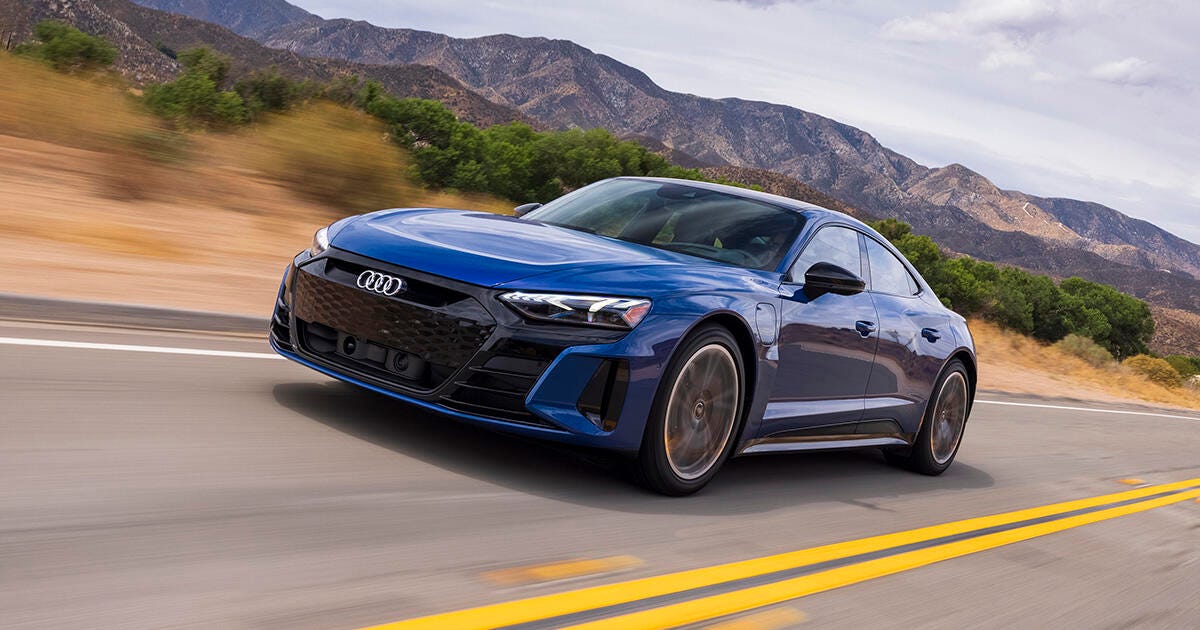
Best Car Loans and Lenders for August 2022
Finding the best rates and terms on a car loan can help you save hundreds or even thousands in interest. With interest rates rising and the cost of car insurance premiums increasing, it's important to shop around with different lenders to find the most affordable car loan for your new or used car.
An auto loan is a secured installment loan, which means the vehicle you purchase acts as collateral and can be subject to repossession if you fail to repay the loan. But the trade-off is a lower interest rate than with unsecured borrowing, such as a personal loan. You can apply for a car loan at a car dealership, bank, credit union or through an online lender.
We'll lay out some of the basics here. Plus, we've evaluated the major national auto loan providers and highlighted the best options for new, used and private party (purchase of a car from a private seller) loans below. We'll update this list regularly as terms change and new loan products are released. Note that all the starting APRs listed assume an "excellent" credit score of 800 or above.
Rates as of Aug. 3, 2022.
- APR: Starting at 3.44% (new car loans through PenFed Car Buying Service), 4.84% (used car loans through PenFed Car Buying Service); Loans outside of this service start at 4.24% (new car loans) or 5.04% (used car loans)
- Loan amounts: $500 to $100,000
- Loan terms: 36 to 84 months
- Minimum annual income: Not specified
- Availability: 50 states
- Prepayment penalty: No
Pentagon Federal Credit Union is a credit union that offers low auto loan rates for both new and used cars, through the PenFed Car Buying Service. You'll need to become a credit union member to use this service, but membership is open to everyone, and requires opening a savings account with a minimum $5 deposit. If you're not interested in using PenFed's program to buy a car, you can still secure lower-than-average rates on new and used cars purchased outside of the service.
With flexible loan terms extending up to seven years, nationwide availability and no prepayment penalties, PenFed is the contender to beat in the auto loan industry.
- APR: Starting at 3.49% (car loans for 2020 or newer vehicles) and 3.74% (car loans for 2016-2019 vehicles)
- Loan amounts: $250 to $100,000
- Loan terms: 0 to 84 months
- Minimum annual income: Not specified
- Availability: Branches across Illinois, shared branches nationwide
- Prepayment penalty: No
Consumers Credit Union is an Illinois-based credit union that has recently opened membership nationwide. Though its auto loan rates for vehicles made prior to 2020 are average for the market, their new car loan rates are a great deal. Consumers Credit Union also offers significant flexibility, with the widest range of loan terms and amounts of the providers we evaluated.
You can become a member online with a valid ID, two recent pay stubs, two tax returns from recent years, five references, two utility bills and a one-time $5 fee to the Consumers Cooperative.
- APR: Starting at 3.99% (new and used car loans) and 4.99% (private party car loans) with Autopay
- Loan amounts: $5,000 to $100,000
- Loan terms: 24 to 84 months
- Minimum annual income: Not specified
- Availability: Online
- Prepayment penalty: No
LightStream is an online lender under Truist Financial that offers low rates for private party car loans. Though its loan amounts and terms are of average flexibility, it offers a variety of auto loan options. It places no restrictions on model year, make or mileage, making it the ideal lender if you plan to purchase an older car. LightStream's slogan, "Lending Uncomplicated®," promises a simplified lending process that includes being able to fund your loan the same day you apply, under certain conditions.
In order to access LightStream's best terms, you'll need to sign up for AutoPay. LightStream's lowest rate loans are also unsecured -- so your car won't be repossessed if you can't make your payments, but your credit will suffer.
- APR: Starting at 4.24% (new car loans), 4.44% (used car loans), and 7.19% (private party loans)
- Loan amounts: $7,500 ($8,000 in Minnesota) to $100,000
- Loan terms: 48 to 72 months
- Minimum annual income: Not specified
- Availability: 50 states
- Prepayment penalty: No
As one of the world's largest banks, Bank of America offers unbeatable availability and great rates. Though you don't need to be a member of Bank of America to use its auto loan services, members may qualify for special perks. For example, if you qualify for Bank of America's Preferred Rewards program -- based on your qualifying combined balances in your BOA deposit and/or Merrill® investment accounts -- you can be eligible for up to 0.50% off your APR.
But Bank of America's loan policies can lack variety. For example, it offers one of the least flexible loan terms on this list, with the shortest loan term set at 48 months. In addition, the minimum financing amount is $7,500, which rules out Bank of America as a loan financier for more inexpensive used vehicles.
- APR: Starting at 4.49% (for new and used car loans)
- Loan amounts: $5,000 to $100,000
- Loan terms: 12 to 72 months
- Minimum annual income: Not specified
- Availability: Branches in 26 states
- Prepayment penalty: 1% of the original loan amount, with a minimum charge of $50 and a maximum of $100
U.S Bank offers interest rates as low as 4.89% for both new and used cars, which makes it a great lender for those purchasing preowned vehicles. If approved, the U.S Bank offers financing of up to 120% of your car's value, with no down payment required.
However, to lock in the lowest used car rates, you'll need to meet specific criteria: Next to have excellent credit, you must have a loan-to-value ratio of 80% or less, buy a used car that's less than 1 year old, have a loan amount of at least $30,000, a loan term of 36 months or less and an automatic payment set up from a U.S. Bank account. Though these requirements are stringent, the low auto loan rates make them worth it for certain buyers.
What are the drawbacks? U.S. Bank's availability is limited to 26 states. Plus, it charges a prepayment penalty of 1% of the original loan amount if you pay off your loan within a year's time.
- APR: Starting at 3.9% (used cars only)
- Loan amounts: Not specified
- Loan terms: 36 to 72 months
- Minimum annual income: $4,000
- Availability: Not available in Alaska or Hawaii
- Prepayment penalty: No
Though Carvana is mostly known for its online used car shopping experience, it also offers auto loans on vehicles you buy through the site. Carvana's only requirements are that you're over 18, make $4,000 annually and have no active bankruptcies, so it's a great choice for those with poor credit. Furthermore, Carvana's wholly online model combines the buying and financing experience, making the process of purchasing a used car relatively painless.
However, though Carvana makes it possible for customers with bad credit to obtain a loan, the best auto loan rates will always be reserved for those with excellent credit – and it's important to note that it offers, by far, the highest starting APR on our list.
Best car loan lenders, compared
| Lenders | PenFed CreditUnion | Consumers Credit Union | LightStream | Bank of America | U.S. Bank | Carvana |
|---|---|---|---|---|---|---|
| Best for | New car loans | Used car loans | Private party car loans | Big bank option | Short loan terms | Those with poor or no credit |
| APR for new car loans | Starting at 3.44% (through PenFed Car Buying Program) | Starting at 3.49 (car loans for 2020 or newer vehicles) | Starting at 3.99% | Starting at 4.24% | Starting at 4.49% | N/A |
| APR for used car loans | Starting at 4.84% (through PenFed Car Buying Program) | Starting at 3.74 (car loans for 2016-2019 vehicles) | Starting at 3.99% | Starting at 4.44% | Starting at 4.49% | Starting at 3.9% |
| APR for private party loans | N/A | N/A | Starting at 4.99% | Starting at 7.19% | N/A | N/A |
| Loan amount | $500 to $100,000 | $250 to $100,000 | $5,000 to 100,000 | $7,500 ($8,000 in Minnesota) to $100,000 | $5,000 to $100,000 | Not specified |
| Repayment terms | 36 to 84 months | 0 to 84 months | 24 to 84 months* | 48 to 72 months | 12 to 72 months | 36 to 72 months |
| Credit requirement (estimate) | Not specified | Not specified | Good to Excellent | Not specified | Not specified | Accepts all credit, no active bankruptcies |
| Availability | All 50 states | Branches across Illinois, shared branches nationwide | Online | All 50 states | Branches in 26 states | Not available in Hawaii or Alaska |
What to know when applying for an auto loan
While car loans usually have fixed interest rates and loan terms, they can often be negotiated, depending on your lender. Your loan rate will generally depend upon your credit score -- the higher your credit score, the lower your annual percentage rate. A higher credit score may also give you access to a larger loan amount or more favorable repayment terms.
Next, you should consider loan terms. Let's say you qualify for a 2.5% APR loan. You'll pay less interest over time with a shorter term loan, but your monthly payments will be higher. Similarly, you'll pay more in interest over time with a longer loan term, but your monthly payments will be lower. Consider your budget and financial goals to determine which loan term will work best for you.
As you consider lenders, find out if they offer a preapproval process. Preapproval allows you to see the rates you qualify for without a hard inquiry -- when a creditor pulls your credit history -- which can cause your credit score to slightly dip. It also allows you to review options upfront without having to commit to a particular lender.
Lenders reviewed:
- Autopay
- Bank of America
- Capital One
- Carvana
- Chase
- Consumers Credit Union
- LightStream
- MyAutoLoan
- PenFed Credit Union
- PNC
- U.S. Bank
*Your loan terms, including APR, may differ based on loan purpose, amount, term length, and your credit profile. Excellent credit is required to qualify for lowest rates. Rates range from 3.99%-10.49% APR w/AutoPay. Rate is quoted with AutoPay discount. AutoPay discount is only available prior to loan funding. Rates without AutoPay are 0.50% points higher. Subject to credit approval. Conditions and limitations apply. Advertised rates and terms are subject to change without notice.
Payment example: Monthly payments for a $10,000 loan at 3.99% APR with a term of 3 years would result in 36 monthly payments of $295.20.
© 2022 Truist Financial Corporation. Truist, LightStream, and the LightStream logo are service marks of Truist Financial Corporation. All other trademarks are the property of their respective owners. Lending services provided by Truist Bank.
The editorial content on this page is based solely on objective, independent assessments by our writers and is not influenced by advertising or partnerships. It has not been provided or commissioned by any third party. However, we may receive compensation when you click on links to products or services offered by our partners.
Source
Tags:
- Best Car Loans And Lenders For August 2022 Moon
- Best Car Loans And Lenders For August 2022 Cpi
- Best Car Loans And Lenders For August 2022 Visa
- Best Car Loans And Interest
- Best Car Loans And Bad
- Best Car Loans And Taxes
- Best Car Loans With Excellent Credit
- Best Car Loans For Bad Credit
- Best Car Loans Rates
- Best Car Loan Rates
- Best Cardiologist Near Me




